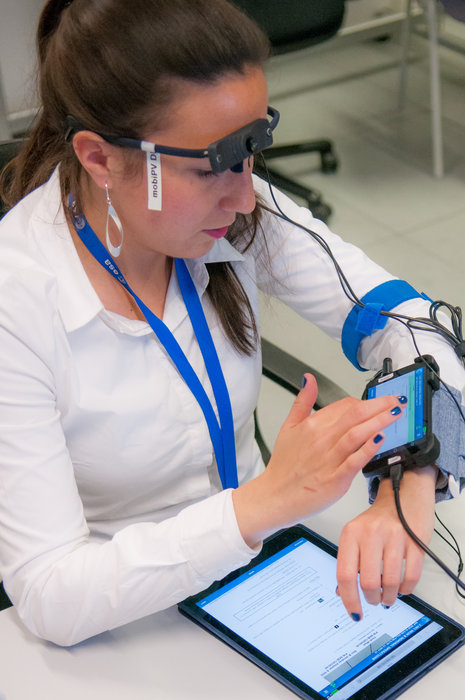A gadget for astronauts. How the ‘mobiPV’ is saving time on the ISS
A device developed by ESA will help astronauts save time and face unforeseen situations with live help from ground control. Called ‘mobiPV’ – mobile procedure viewer – the gadget is set to be a standard part of the International Space Station.
Astronauts sometimes have to assemble complex furniture with the tools and paper instructions floating out of their reach. Also, they might face face situations unforeseen by the instructions and lose time because of delays with ground control to troubleshoot these occasions. That’s why, in 2014, ESA started testing a new gadget called mobiPV.
MobiPV uses software on an Android smartphone that allows astronauts to perform manual tasks hands-free while connecting them in real time to mission control via video, voice and text. In addition to the smartphone strapped to their wrist, astronauts are equipped with a head-mounted camera, an audio headset, and a tablet as an alternate display option.

According to a press release, astronaut Andreas Mogensen first tried out mobiPV during NASA’s underwater space simulation three years ago, and during his mission to the Space Station in September 2015. Those trials led to fewer cables and a major software redesign to allow multiple ground stations to link to the astronauts. The software was improved again following a July 2016 test by ESA astronaut Matthias Maurer during NASA’s latest aquatic venture.
ESA says mobiPV will become a standard part of the Space Station and astronaut Paolo Nespoli will be next to try it out during his mission later this year, after which ESA can offer it to all Station partners. As with all technology, it will be continually updated based on feedback. Its developers are already looking to add augmented reality headsets for a richer and more efficient experience.
But the device will not only be available to astronauts. Because mobiPV only needs an internet connection and is adaptable to different procedures and environments it can be used by subsea, military and other environments.
Although ESA says there’s no word on it yet, a household version could also be available in the future.